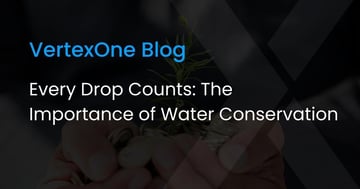Another version of this article appears in CS Week Newsline, Winter 2020 Edition.
Every year, companies collect massive amounts of data about their customers, their operations, and their infrastructure, and it is increasing at an exponential rate. More data has been generated in the last two years than in the whole of human history. Of course, most of the time the bulk if not all of it remains locked away in siloed application databases or stuffed into a data warehouse.
Collecting data is important, yes, but actually leveraging it to provide valuable, actionable insights is even more so. That’s why data is often considered a business’ greatest asset—the “oil of the information age.”
The question is, how and when will the enterprise really get serious about data analytics and start reaping the benefits? More specifically, when will utilities?
If other industries can leverage their data, shouldn’t utilities?
It is happening, albeit slowly. Take the way popular e-commerce websites seem to just “know” what a shopper wants, almost before they know themselves. These insights aren’t just based on a customer’s prior order history. It’s more than that. There’s a ton of data about at their disposal, if they know where to look for it and analyze it. It comes from account data, online activities, the services we consume, how we consume them, our social media habits, even local geographical and weather data—and that’s just for starters. Analyze all that data and you can uncover some remarkable patterns and insights—which allows e-commerce retailers to able to increase sales and continue providing a better customer experience (and fatten their bottom lines at the same time).
However, e-commerce retailers are far from the only collectors of significant data on their customers, nor are they the only ones that can reap the benefits.
Regardless of industry, customer support has become not only pivotal to customer satisfaction, but critical to consumer brand loyalty. Indeed, in commoditized industries where “price” is no longer a prime motivator, customer service and the “experience” can be all that differentiates one company from its competition. Even in highly regulated industries where there is no competition—such as utilities—the level of customer satisfaction with support services can affect rate cases, that is, how much they can charge for their services.
So, given the importance of elevating customer service, it’s high time utilities put all this data they’ve been collecting about their customers to work. It’s time to leverage data analytics to push the envelope on customer service and support.
The immense value of analytics to the customer experience
Data analytics—once used by only the larger utilities—are coming into reach of utilities of all sizes. By analyzing the wide variety of customer, metering, and other data available to them, soon even mid-to-smaller utilities will be able to gain and apply valuable insights that can add immense value to their customer experience. Let’s look at just a few of those applications.
-
Predictive maintenance – By tracking the age and maintenance history of valves, motors, pumps, and other service transmission infrastructure—even individual smart meters—utilities can predict when each component is likely to fail or at least need service and beat that schedule. What better experience can a utility provide than to ensure its customers always have water, gas, or electricity when they need it?
-
Customer segmentation – By using demographics, usage patterns, notations from support interactions, and a variety of third-party data, utilities can predict behaviors like propensity to pay, to enroll in self-service, to sign up for paperless billing, to be interested in conservation programs, and more. By targeting marketing of information, offers, and programs directly to those likely to want them, utilities can save precious marketing spend and effort.
-
Leak detection and prevention – By analyzing meter data by area and individual service address, utilities will identify high usage patterns which could indicate a gas or water leak—or even the possibility of faulty electrical equipment. By then sending proactive leak detection notifications to the affected customer, they can prevent unexpectedly high bills, reduce resource waste, and potentially avoid property damage.
-
More accurate forecasting – Historically, knowing when to plan for high and low usage has been somewhat of a calendar exercise. However, taking into account not only past usage, but also population increase in certain areas, weather, and other info can help both utilities prepare for those peaks and valleys—and helps their customers be aware and prepared, too.
-
Proactive support for better retention – Wouldn’t it be great to give each utility support team member mind-reading capabilities, so they know exactly what to say to a customer when they call? Soon utilities will be able to apply speech and conversation analytics to help understand and empathize a customer’s sentiments—even their likelihood to churn—just by what they’ve said and how they’ve said it, today and in the past.
Analytics will allow utilities to scale operationally, too
As populations grow and move around, especially in urban centers—so do the demands on utilities to scale their services to keep up with that growth. And along with that is a corresponding increase in connection requests and the volume of data utilities will collect and have to process. How, then, can utilities scale to meet this influx? More specifically, how will they continue to provide personalized, timely customer service—that which even regulated utilities need to give—without constantly growing their staves?
Data analytics is what will help provide that excellent customer experience, as we’ve already said, but now there will be more customers, more data, and insights required to keep them happy. However, whether there are ten new account requests today or a thousand, if the utilities solutions are built to scale there should be no impact on the experience. True, a major influx of new customers and connection requests could mean additional staff and truck rolls to keep pace. However, in major population centers with AMR and smart meter technology, that is not likely.
Whether it is processing new requests, providing billing support, or handling calls in support centers, automation, and scalable analytics will allow staff to continue serving customers in a personalized and timely manner no matter the size of the audience.
Improving processes, not just customer engagement
Without a doubt, data analytics will grow in importance in elevating a utility’s customer experience, no matter what growth rate of the base. However, the power of data and data analytics extends beyond customer engagement. We need to consider data as a way to improve utilities’ internal processes, too. Because that, in turn, will lead to even greater customer service.
Data analytics can suggest to a utility what new programs are likely to be of interest to customers, based on their past interests and utilization of other programs. By analyzing customer behaviors, what types of customer assistance programs would be adopted and by which customers? Would a rebate program work better to encourage responsible consumption—or would simply lowering or tiering the rates work better? Which manual in-person processes would better serve the majority of customers, and which should stay person-to-person? Analysis of the volume and types of inbound customer communications might inform whether we should invest in additional headcount for the CSR team—or invest in further automation or customer self-service options.
Data Analytics: The future of the utility customer experience depends on it
On its own, collecting masses of data does little but take up storage space. Slowly but surely, utilities are joining the ranks of enterprises that are leveraging data and predictive analytics to put that data to work. Simply put, the combination of data, analytics, and automation will continue to help us boost the experience of utility customers by not only providing reliable, personalized, and proactive service. But it can and should also do that by helping utilities improve themselves.
Ready to get started? Learn how VertexOne Analytics can help utilities harness the power of their data to improve both customer engagement and operational processes as well here.




